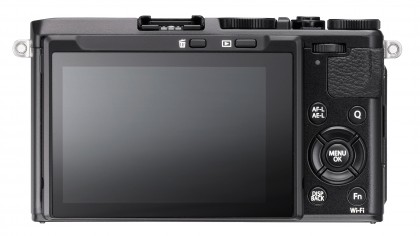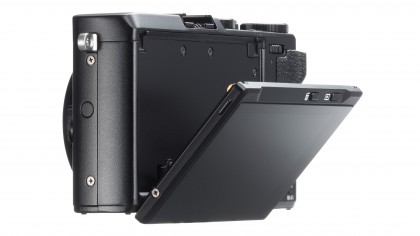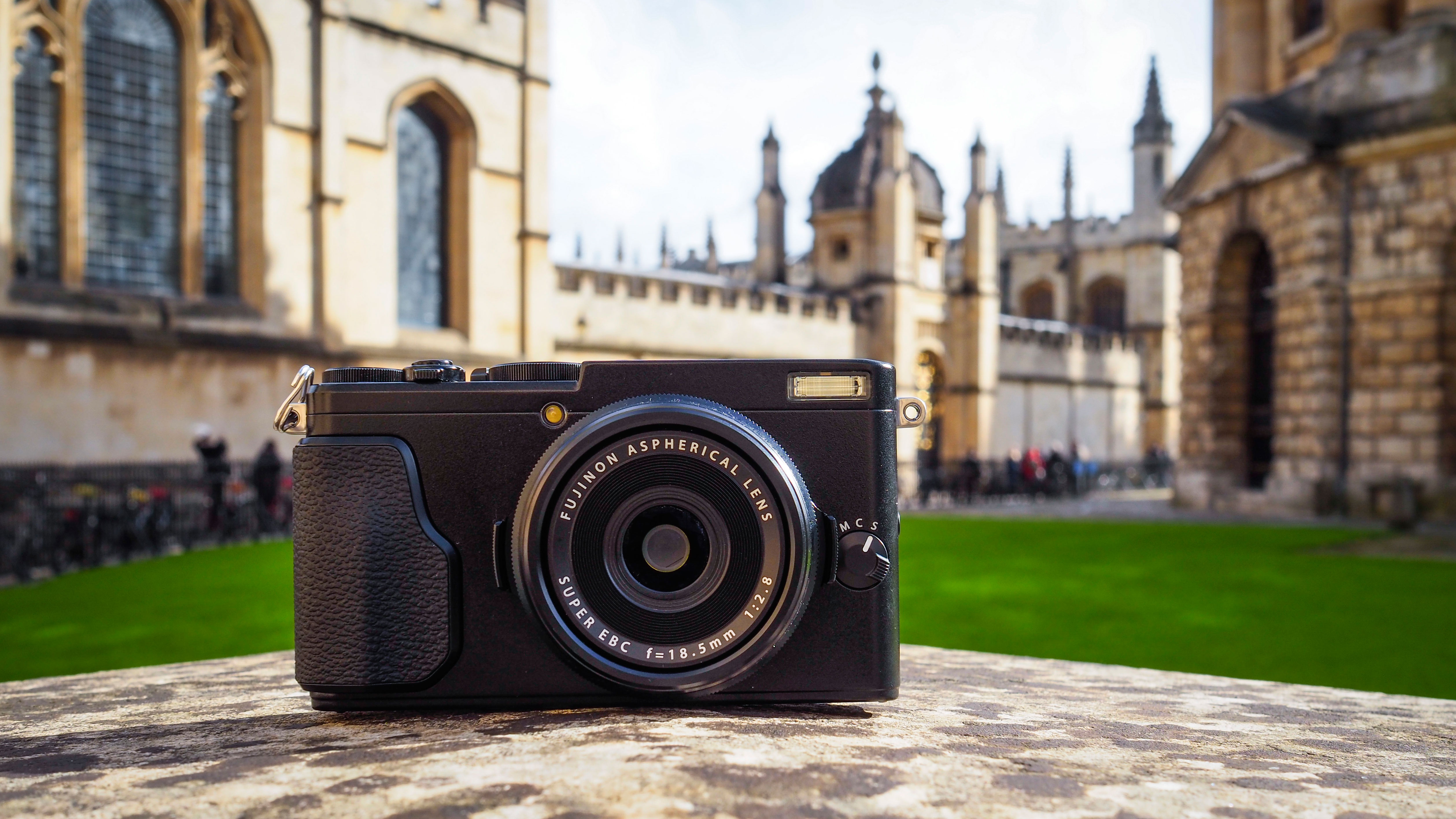Why you can trust TechRadar
At 112.5 x 64.4 x 44.4mm (4.4 x 2.5 x 1.7 inches), the X70 is significantly smaller than the X100T (126.5 x 74.4 x 52.4mm or 5.0 x 2.9 x2.1 inches and a little smaller than the X30 (118.7 x 71.6 x 60.3mm or 4.7 x 2.8 x 2.4 inches) which has a smaller 2/3-inch sensor.
Despite the small size, the body has a nice, solid build. A shallow rubberised grip on the front of the camera along with a small pad on the back with a pronounced ridge make it feel comfortable and safe in your hand. While you can hold and use it one-handed, the most natural way to shoot with the X70 is to support it with the addition of your left hand on the lens aperture ring. With that in mind the two lugs on the ring aren't ideally placed. When the ring is at the mid-way point they are at 3 and 9 o'clock around the lens, but it would feel more natural if there was one at the bottom (6 o'clock) or perhaps there were two towards the bottom of the ring.
Helpfully, the X70's screen is touch sensitive, but this can't be used for making setting selections or adjustments – even when using the Quick Menu. In shooting mode its use is restricted to setting autofocus point or tripping the shutter with a tap of the screen. In Play mode, pinch zoom is useful for checking image sharpness, while swipes can be used to scroll through images. Those who don't like touch controls can turn the screen's touch-sensitivity off and use the physical controls instead.

On the back of the camera there are four buttons around the usual navigation control, with a central Menu/OK button. One of these four is used for locking the metering and focus, while another controls the display and a third is available for customisation but activates the Wi-Fi system by default. The fourth button is used to activate the customisable Quick Menu which provides a quick route to 16 of the most commonly used features. These small buttons, especially the Quick menu and Wi-Fi buttons, can be a little hard to distinguish with your thumb when you're not looking at the camera, especially if your hands are cold. But in the absence of a viewfinder it's not often that you'll be trying to press the buttons without looking at the back of the camera, so it's not a major issue.

The jog-dial above the thumbrest on the back of the camera is useful for making quick adjustments and navigating around the menu. In addition to the aperture ring, there's a control ring around the lens which is customisable but in manual focus mode is used to focus the lens. I used it to change the sensitivity (ISO) setting but it's also possible to set it to change the Film Simulation mode, white balance, sensitivity or digital teleconverter setting (35mm or 50mm equivalent). The ring has nice smooth action but there's a slight lag in the setting adjustment being made which makes using it a bit frustrating and I sometimes overshot the value I wanted to use.
In bright light I found it necessary to set the LCD screen to its brightest value, but it generally provides a clear view with a nice level of detail. I didn't encounter any situations when I needed to focus manually, but should it happen the magnified view on the screen and Focus Peaking make it easy to get the subject sharp. I had less success with the Digital Split Image which seems to need very high contrast edges to work well.
While the X70's controls are responsive, there were several occasions when I wanted to turn the camera on almost immediately after turning it off and it failed to come to life. This is something we've noted before with some Fuji cameras, including the X-E2S. It likes a little pause after being turned off before being reactivated.
Sign up for breaking news, reviews, opinion, top tech deals, and more.
And while the exposure compensation dial doesn't rotate too readily when you don't want it to, I found the power switch had turned to the on position on a few occasions when I pulled the camera from my bag.
